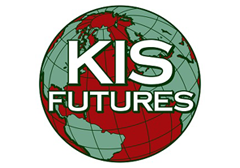
Today, U.S. Environmental Protection Agency (EPA) announced $3 billion in new funding for states through the State Revolving Fund (SRF) programs to reduce exposure to lead in drinking water. EPA conducted a thorough review of previously awarded funding and assessed updated lead service line data to increase accountability and ensure funds are properly distributed to achieve maximum impact in removing lead pipes and reducing lead contamination in drinking water systems. This funding will accelerate progress in finding and removing lead pipes (also known as lead service lines that deliver water to homes, schools, and businesses) as the agency also announces a new lead service line inventories dashboard with the latest information provided by states. Lead pipes are the key source of lead—a potent neurotoxin particularly harmful to children—in drinking water.
“This investment represents the EPA’s unwavering commitment to protecting America’s children from the dangers of lead exposure in their drinking water,” said EPA Administrator Lee Zeldin. “With our updated data, we can tackle this challenge more efficiently than ever before, and we’re ensuring every dollar goes directly toward replacing the lead pipes that threaten our communities. This is about giving parents peace of mind and securing healthier futures for the next generation.”
“Supporting drinking water systems as they work around the clock to provide safe water for all Americans is one of EPA’s top priorities,” said EPA’s Assistant Administrator for Water, Jess Kramer. “Today’s announcement is a win-win for drinking water systems and for the health and futures of our nation’s children. Not only are we providing $3 billion in new federal assistance for replacing lead pipes, and $1.1 billion in redistributed federal funding, but we also expect that this money will go farther because updated inventory data show far fewer lead pipes across the country.”
Reducing drinking water exposure to lead is a priority under EPA’s Powering the Great American Comeback Initiative. The Trump Administration’s commitment to tackling lead in drinking water is a throughline from the first term, when EPA issued the first regulation in 30 years to strengthen protections.
The agency is also releasing new information indicating that there are fewer lead service lines nationwide than previously estimated. EPA’s updated estimate is 4 million lead service lines, down from 9 million previously estimated. This significant reduction is driven by improved data provided by service line inventories required by the first Trump Administration’s Lead and Copper Rule Revisions. The agency is releasing a new dashboard highlighting information from lead service line inventories provided by states.
EPA’s goal is to ensure these funds are deployed where they are needed most. Therefore, funding allotments will be distributed based on the best available information locating the approximately 4 million active lead service lines. EPA gathered this information from states in a lead service line inventory.
EPA is also announcing the redistribution of an additional $1.1 billion in previously announced DWSRF funding to address lead. These funds were made available to states but have not been used. Consistent with the Safe Drinking Water Act’s directive to reallocate unused funds, these investments are now available to different eligible states with lead service line replacement needs.
States that have neither obligated or spent any awarded funds since at least fiscal year 2023 will be required to submit a plan to EPA detailing their strategy for expeditiously using funds to address lead before being eligible for new funding. EPA is committed to ensuring that the federal funding is used effectively and efficiently to address lead challenges facing local communities. The agency will proactively work with states to ensure they are expeditiously spending this funding by making awards to water systems for lead service line replacement projects.
These funds can be used for lead service line replacement (LSLR) and associated activities like identification, planning, design, and replacement. With this funding, EPA is issuing an Additional Eligibilities for State Implementation of the IIJA DWSRF LSLR Appropriation memorandum underscoring important flexibilities under this appropriation to ensure states can use the funding more efficiently and effectively.
For more information about the DWSRF program, visit https://www.epa.gov/dwsrf.


















